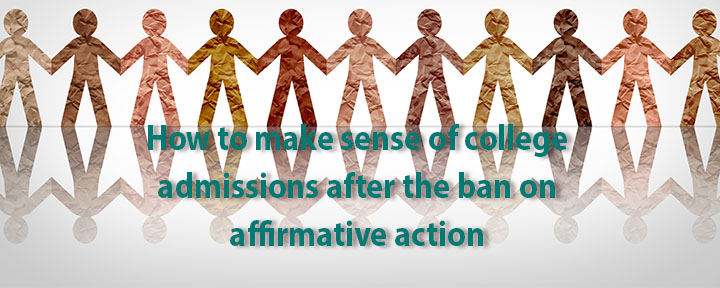Ramifications of Affirmative Action Ban on College Admissions

Who benefits from Affirmative Action?
Affirmative action policies were designed to address historical and ongoing inequalities by providing preferential opportunities to Black and Hispanic students that have been marginalized or disadvantaged. These policies were aimed to promote diversity, inclusion, and equal representation in education.
Who is targeted by Affirmative Action?
Critics of affirmative action argue that it is unfair to Asians and Whites who may be denied admission to as a result of these policies. They believe that affirmative action can result in reverse discrimination by favoring individuals based on their race or gender, rather than their individual merit. It undermines the principles of fairness and equality; students should be evaluated solely on their qualifications, skills, and abilities, rather than their demographic characteristics.
What about minimum admission requirements?
Most selective colleges claim that all students meet their admissions standards. However, I work with students who have been admitted to elite colleges through affirmative action and they often come to me because they’re struggling to pass their classes. When students don’t have the critical reading or essay writing skills needed to succeed at these top universities, they often feel like imposters or failures, and these negative experiences can haunt them for the rest of their lives.
What about legacies?
According to Insider Higher Ed, University of Southern California (USC), Pepperdine University, and Vanguard University admitted some legacy students who did not meet the minimum admissions requirements. USC admitted eight students over the past 4 years who were related to donors or alumni but didn’t meet admission requirements. Two of these students hadn’t even taken Algebra 2 in high school and two others hadn’t graduated from high school. Over the past 3 years, Pepperdine admitted ten legacy students and Vanguard admitted nine students who didn’t meet the university’s standards.
When colleges select their incoming students based on family legacies and large financial contributions, they dumb down their incoming classes. When parents donate large sums of money to get their children into selective colleges, they send heartbreaking messages to their children that they don’t believe their children can get into college. Some parents involved in the Varsity Blues Scandal went to prison when they were caught bribing admissions officers, paying off SAT proctors, and buying coaches to lie about their children’s athletic talents. Why would a parent want their child to be the bottom of the class and struggle to graduate because they don’t belong there?
Should top universities admit the best students?
There are over 4,000 colleges and universities in the United States, and only a few are highly selective (acceptance rate lower than 10%). That means that most colleges will admit just about anyone who applies. But those elite colleges, should be allowed to enroll the smartest students to work with world-class professors so these institutions can create innovative and inspirational think tanks. Imagine the synergy in discussion groups and the solutions to major problems that these brilliant students and professors could solve. Here in the United States, we have produced more patents and started more innovative businesses than any other country in the world, but we may be losing our winning edge to China and Japan.
We shouldn’t lower the productivity of these institutions by focusing on ethnicity-based quotas, which reduce the space to enroll the best students. Seeking a diverse student body from various socio-economic and ethnic backgrounds makes this mix of students even more dynamic, but should only be considered for tie breakers when two students have equal talent and brilliance.
The key is finding a way to select students for these exceptional higher education institutions without having to fulfill quotas and lower academic standards. I’ve addressed productive and realistic ways to make top colleges accessible to a diverse group of students in another article. Let’s keep this discussion going!
